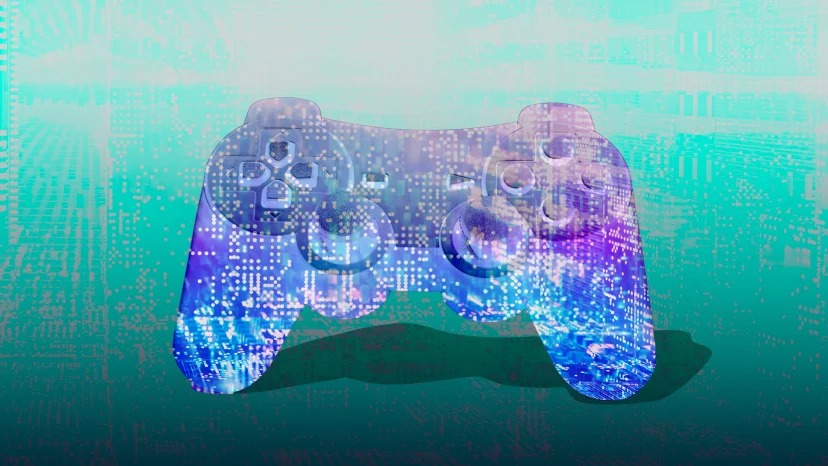As artificial intelligence (AI) continues to evolve, its impact on industries worldwide has been transformative. However, among game developers, the rise of AI has sparked mixed emotions. While some view it as an exciting opportunity to push creative and technological boundaries, others fear it could undermine jobs, creativity, and the human essence of game design. These concerns have intensified as studios increasingly explore AI-driven initiatives, balancing the potential for groundbreaking advancements with the risks posed to the industry’s workforce and creative ecosystem.

Game development is an industry deeply rooted in collaboration, where artists, programmers, designers, and writers work in unison to craft immersive experiences. With the integration of AI tools, the processes behind creating these worlds are undergoing significant changes. AI algorithms can now generate procedural content, design levels, create characters, and even write narratives. Although these capabilities offer efficiency and scalability, they have left many developers questioning what role human creativity will play in the future of gaming.
For game developers, AI-powered tools have become both a blessing and a source of uncertainty. On one hand, AI has proven its ability to automate repetitive tasks, such as texturing 3D models, animating complex sequences, or populating vast game worlds with realistic elements. This automation enables studios to save time and allocate resources more effectively, potentially leading to faster production cycles and lower costs. On the other hand, developers are wary of relying too heavily on AI, fearing it could homogenize creative processes and diminish the distinctiveness that comes from human input.
Another pressing concern among game developers is the potential for AI to replace roles that have traditionally been filled by skilled professionals. Artists and designers, for instance, have expressed apprehension about AI-generated assets reducing the demand for hand-crafted work. Similarly, writers worry about AI tools being used to generate scripts or dialogue, bypassing the nuanced understanding of character development and storytelling that human writers bring to the table. While studios may argue that these tools are intended to augment human creativity rather than replace it, the lack of clear safeguards has left many developers uneasy about the future of their professions.
At the heart of the debate lies the question of ownership and originality. As AI systems become increasingly sophisticated, their ability to generate content raises ethical and legal concerns about intellectual property. Developers have pointed out that AI models are often trained on vast datasets, which may include copyrighted materials. The outputs generated by these systems, therefore, blur the lines between original creation and replication. For developers and artists who rely on their unique styles and ideas to stand out in a competitive industry, this lack of clarity poses a significant challenge.
Studios have responded to these concerns in various ways, with some actively engaging with their teams to ensure transparency and inclusivity in AI implementation. These studios argue that AI should be seen as a tool to enhance creativity, not a substitute for it. By involving developers in the decision-making process and providing opportunities for reskilling, they aim to foster an environment where AI and human ingenuity can coexist harmoniously. However, this approach requires a delicate balance, as over-reliance on AI could inadvertently stifle the very creativity it seeks to amplify.
The integration of AI in game development has also sparked broader discussions about the future of storytelling in games. Traditional narratives have often relied on linear structures or branching paths designed by human writers. With AI, there is potential to create dynamic narratives that adapt to player choices in real time, resulting in personalized experiences. While this technology is exciting, it also raises questions about whether procedurally generated stories can achieve the emotional depth and resonance that come from human-crafted narratives.
Beyond creativity, the adoption of AI has practical implications for the gaming industry’s labor market. As studios embrace AI-driven automation, there is concern that cost-cutting measures could lead to workforce reductions. For smaller studios or independent developers, the affordability of AI tools may level the playing field, allowing them to compete with larger companies. However, for those whose livelihoods depend on traditional roles, the transition to AI-driven workflows could be disruptive, requiring significant adjustments and retraining.
Despite these challenges, some game developers see AI as an opportunity to innovate and expand the boundaries of what games can achieve. By leveraging AI, studios can experiment with ideas that were previously deemed too complex or resource-intensive. For example, AI-driven procedural generation can create expansive game worlds that evolve organically, offering players unique experiences with every playthrough. Similarly, advancements in AI-driven character behavior and dialogue could lead to more immersive and lifelike interactions, enhancing the overall gaming experience.
To better understand the current state of AI adoption in the gaming industry, the following table provides an overview of key applications and their implications:
| AI Application | Function | Implications |
|---|---|---|
| Procedural Content Creation | Automates generation of environments, assets | Reduces workload but may limit originality |
| Narrative Design | Creates adaptive storylines and dialogue | Enhances immersion but risks losing emotional depth |
| Animation and Physics | Simulates realistic movements and interactions | Improves realism but raises ethical concerns about replacing animators |
| Quality Assurance | Identifies bugs and optimizes performance | Speeds up testing but may overlook nuanced gameplay issues |
| Player Analytics | Tracks user behavior for personalized gameplay | Enhances engagement but raises privacy concerns |
These applications demonstrate the potential of AI to transform game development while highlighting the complexities involved in its adoption. As you look at these developments, it becomes clear that the gaming industry is at a crossroads, where the integration of AI must be approached thoughtfully to ensure it benefits both creators and players.
To address the challenges posed by AI, industry stakeholders must work collaboratively to establish ethical guidelines and best practices. This includes ensuring transparency in how AI tools are used, protecting intellectual property rights, and providing developers with the training and resources needed to adapt to new workflows. By fostering a culture of collaboration and innovation, the gaming industry can navigate the complexities of AI integration while preserving its core values of creativity and artistry.
As a player, you are likely to experience the benefits of AI in subtle yet impactful ways. From more immersive game worlds to personalized gameplay experiences, AI has the potential to enhance your interactions with games. However, it is equally important to recognize the efforts of the developers behind these experiences and support initiatives that prioritize their well-being and creative autonomy.
The rise of AI in game development is a testament to the industry’s ability to evolve and adapt to new challenges. While the road ahead is fraught with uncertainties, it also holds immense promise for those willing to embrace change and push the boundaries of what games can achieve. By striking the right balance between innovation and responsibility, the gaming industry can ensure that AI serves as a catalyst for growth rather than a source of division. For you as a gamer, this means a future filled with possibilities, where technology and creativity come together to redefine the art of gaming.










Add Comment